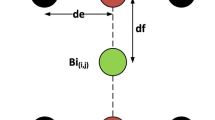Abstract
This paper presents a high-performance 2D-to-3D conversion algorithm technique and its VLSI architecture design for natural scenes. In this study, the depth map was generated based on the horizontal dividing line concept. Also, the dividing line was estimated by obvious color difference on the local region, and the current dividing line was a demarcation from the maximum value to the minimum one for the depth map. A Depth Based Image Rendering technology was employed to generate stereoscopic images according to the image channel of the depth map. Based on the proposed algorithm, a real-time VLSI architecture is presented. Also, for the purpose of cost efficiency, a module-based hardware consisting of a timing schedule control should be designed. The multiplications and divisions of the algorithm can be minimized by circuit design, and so this helps reduce the complexity of this system. Only one frame memory is required to generate real-time 3D images using the depth map. The depth map can be immediately calculated by referring to the location of dividing lines, which can reduce the storage size and I/O bandwidth. The circuit is simulated and verified by one FPGA chip. The critical path is at the multiplex and one flip-flop, and the maximum clock rate can achieve 205 MHz. To be VGA compatible, the stereoscopic RGB pixels can be outputted in parallel per clock to the interface. The overall maximum data rates of the proposed 3D conversion chip can achieve 610 M bytes per second. This can meet the real-time HD requirement.

























Similar content being viewed by others
References
C.C. Cheng, C.T. Li, L.G. Chen, A novel 2D-to-3D conversion system using edge information. IEEE Trans. Consumer Electron. 56(3), 1739–1745 (2010)
S. Choi, D. Min, B. Ham, Y. Kim, C. Oh, K. Sohn, Depth analogy: data-driven approach for single image depth estimation using gradient samples. IEEE Trans. Image Process. 24(12), 5953–5966 (2015)
Y.C. Fan, Y.C. Chen, S.-Y. Chou, Vivid-DIBR based 2D–3D image conversion system for 3D display. IEEE J. Display Technol. 10(10), 887–898 (2014)
Y. Feng, J. Ren, J. Jiang, Object-based 2D-to-3D video conversion for effective stereo content generation in 3D-TV applications. IEEE Trans. Broadcast. 57(2), 500–509 (2011)
Y.C. Fan, B.L. Lin, S.Y. Chou, Hardware structure of 2D to 3D image conversion system for digital archives, in Proceedings of 17th International Symposium on Consumer Electronics (ISCE), (IEEE, Hsinchu, Taiwan, 2013), pp. 111–112
W. Huang, X. Cao, K. Lu, Q. Dai, A.C. Bovik, Toward naturalistic 2D-to-3D conversion. IEEE Trans. Image Process. 24(2), 724–733 (2015)
J.L. Herrera, C.R. del-Blanco, N. García, A novel 2D to 3D video conversion system based on a machine learning approach. IEEE Trans. Consumer Electron. 62(4), 429–436 (2016)
J.L. Herrera, C.R. del-Blanco, N. García, Automatic depth extraction from 2D images using a cluster-based learning framework. IEEE Trans. Image Process. 27(7), 3288–3299 (2018)
Y.R. Horng, Y.C. Tseng, T.S. Chang, VLSI architecture for real time HD1080p view synthesis engine. IEEE Trans. Circuits Syst. Video Technol. 21(9), 1329–1340 (2011)
M. Kim, 2D-to-3D conversion using color and edge, in International SoC design conference (ISOCC), (IEEE, Jeju, Korea, 2014), pp.171–172
H. Kumar, A.S. Yadav, S. Gupta, K.S. Venkatesh, Depth map estimation using defocus and motion cues. IEEE Trans. Circuits Syst. Video Technol. 29(5), 1365–1379 (2019)
J. Lee, Y. Kim, S. Lee, B. Kim, J. Noh, High-quality depth estimation using an exemplar 3D model for stereoscopic conversion. IEEE Trans. Visual. Comput. Graph. 21(7), 835–846 (2015)
Y.K. Lai, Y.F. Lai, Y.C. Chen, An effective hybrid depth-generation algorithm for 2D-to-3D conversion in 3D displays. IEEE J. Display Technol. 9(3), 154–161 (2013)
H. Lee, Y. Chung, 2D-to-3D conversion based hybrid frame discard method for 3D IPTV systems. IEEE Trans. Consumer Electron. 62(4), 463–470 (2016)
Y. Li, L. Claesen, K. Huang, M. Zhao, A real-time high-quality complete system for depth image-based rendering on FPGA. IEEE Trans. Circuits Syst. Video Technol. 29(4), 1179–1193 (2019)
Micron, Automotive DDR SDRAM MT41J128M16La
H. Mohaghegh, N. Karimi, S.M.R. Soroushmehr, S. Samavi, K. Najarian, Aggregation of rich depth-aware features in a modified stacked generalization model for single image depth estimation. IEEE Trans. Circuits Syst. Video Technol. 29(3), 683–697 (2019)
Y. Niu, F. Liu, W.C. Feng, H. Jin, Aesthetics-based stereoscopic photo cropping for heterogeneous displays. IEEE Trans. Multimedia 14(3), 783–796 (2012)
R. Phan, D. Androutsos, Robust semi-automatic depth map generation in unconstrained images and video sequences for 2D to stereoscopic 3D conversion. IEEE Trans. Multimedia 16(1), 122–136 (2014)
Samir Palnitkar, “Veriolg HDL,” Prentice Hall, Nj07458, 1996
C. Ttofis, C. Kyrkou, T. Theocharides, A low-cost real-time embedded stereo vision system for accurate disparity estimation based on guided image filtering. IEEE Trans. Comput. 65(9), 2678–2693 (2016)
W. Xu, S. Yin, Z. Zhang, H. Dong, R. Shi, L. Liu, S. We, Reconfigurable VLSI architecture for real-time 2D-to-3D conversion. IEEE Access 5(11), 26604–26613 (2017)
Xilinx, The field programming gate array, Web: www.xilinx.com
H. Yuan, S. Wu, P. Cheng, P. An, S. Bao, Nonlocal random walks algorithm for semi-automatic 2D-to-3D image conversion. IEEE Signal Process. Lett. 22(3), 371–374 (2015)
S.J. Yao, L.H. Wang, D.X. Li, M. Zhang, Real-time full HD 2D-to-3D video conversion system based on FPGA, in Seventh International Conference on Image and Graphics, (IEEE, Qingdao, China, 2013), pp. 774–778
Z. Zhang, S. Yin, L. Liu, S. Wei, A real-time time-consistent 2D-to-3D video conversion system using color histogram. IEEE Trans. Consum. Electron. 61(4), 524–530 (2015)
X. Zhang, H. Dai, H. Sun, N. Zheng, Algorithm and VLSI architecture co-design on efficient semi-global stereo matching. IEEE Trans. Circuits Syst. Video Technol. 30(11), 4390–4403 (2020)
Author information
Authors and Affiliations
Corresponding author
Additional information
Publisher's Note
Springer Nature remains neutral with regard to jurisdictional claims in published maps and institutional affiliations.
Rights and permissions
About this article
Cite this article
Hsia, SC., Wang, SH. & Tsai, HC. Real-time 2D to 3D Image Conversion Algorithm and VLSI Architecture for Natural Scene. Circuits Syst Signal Process 41, 4455–4478 (2022). https://doi.org/10.1007/s00034-022-01983-y
Received:
Revised:
Accepted:
Published:
Issue Date:
DOI: https://doi.org/10.1007/s00034-022-01983-y




